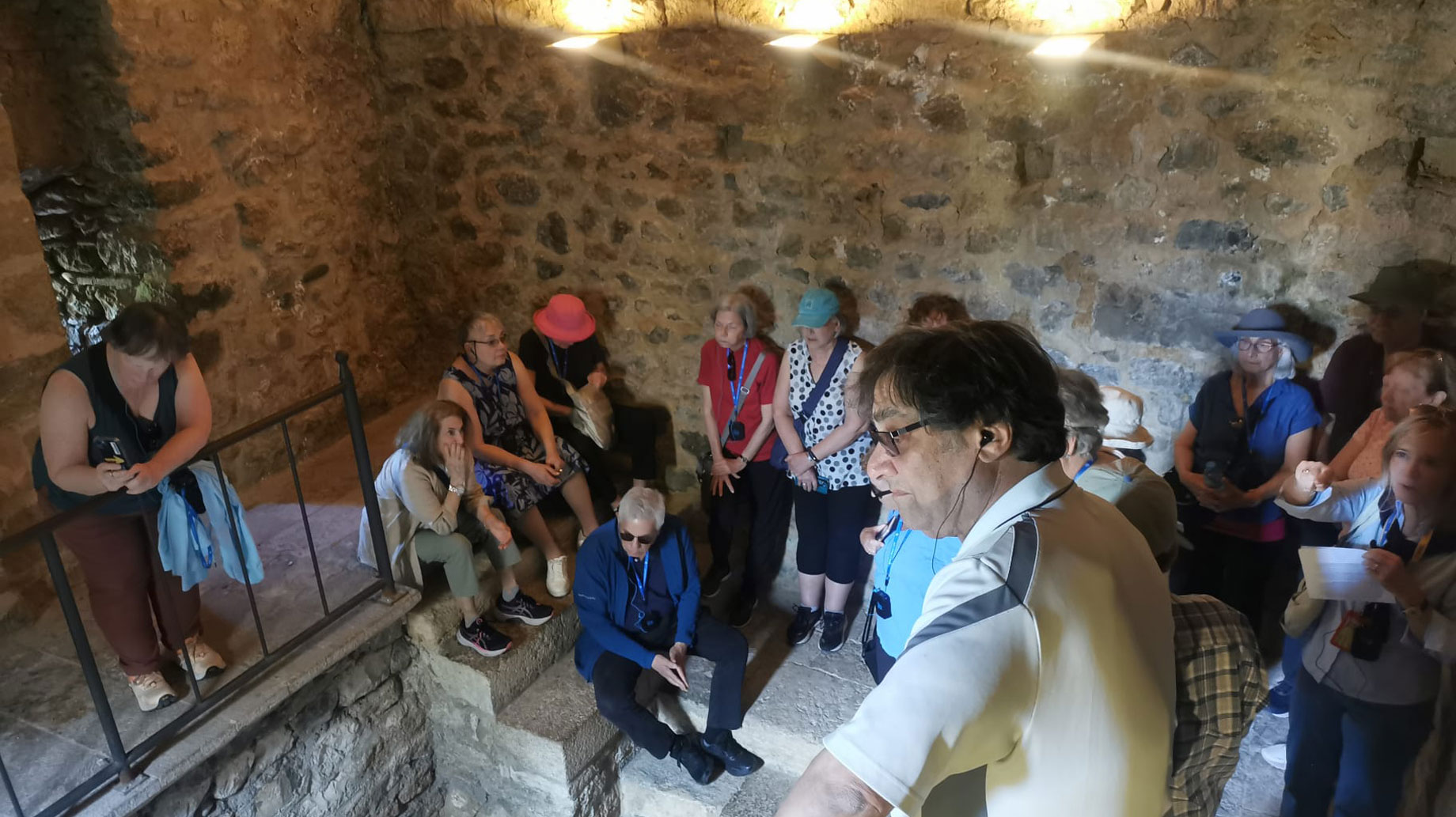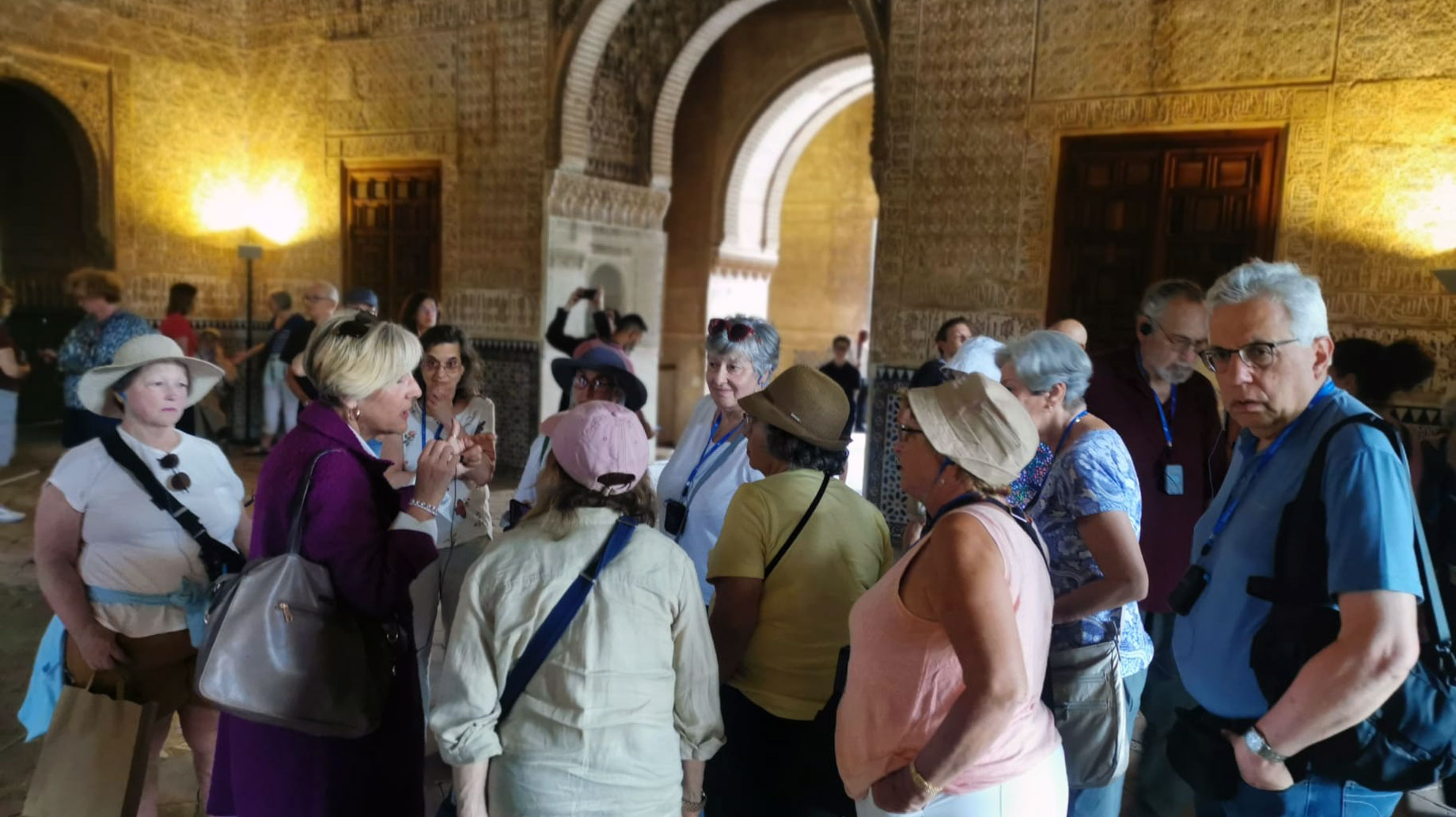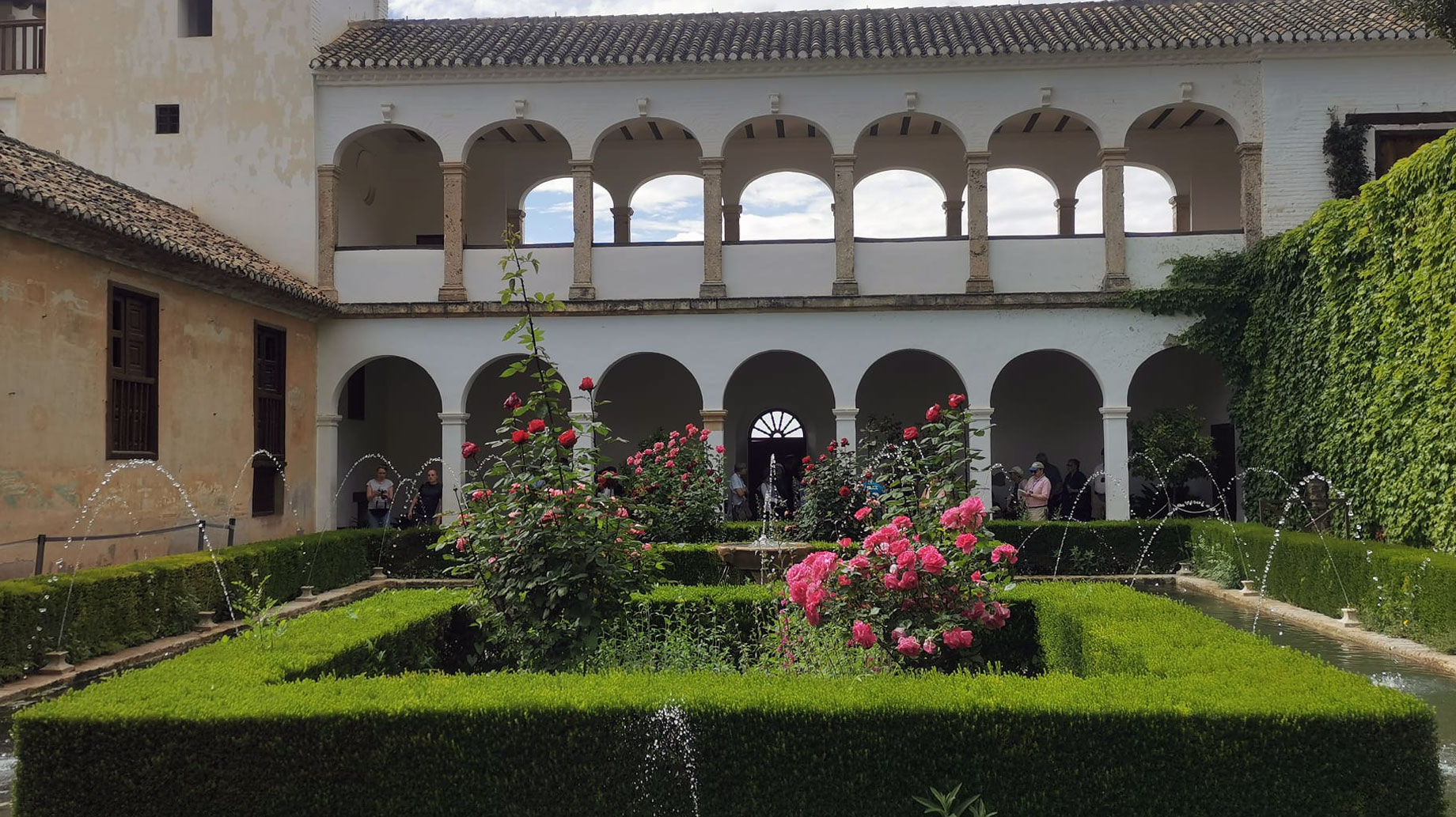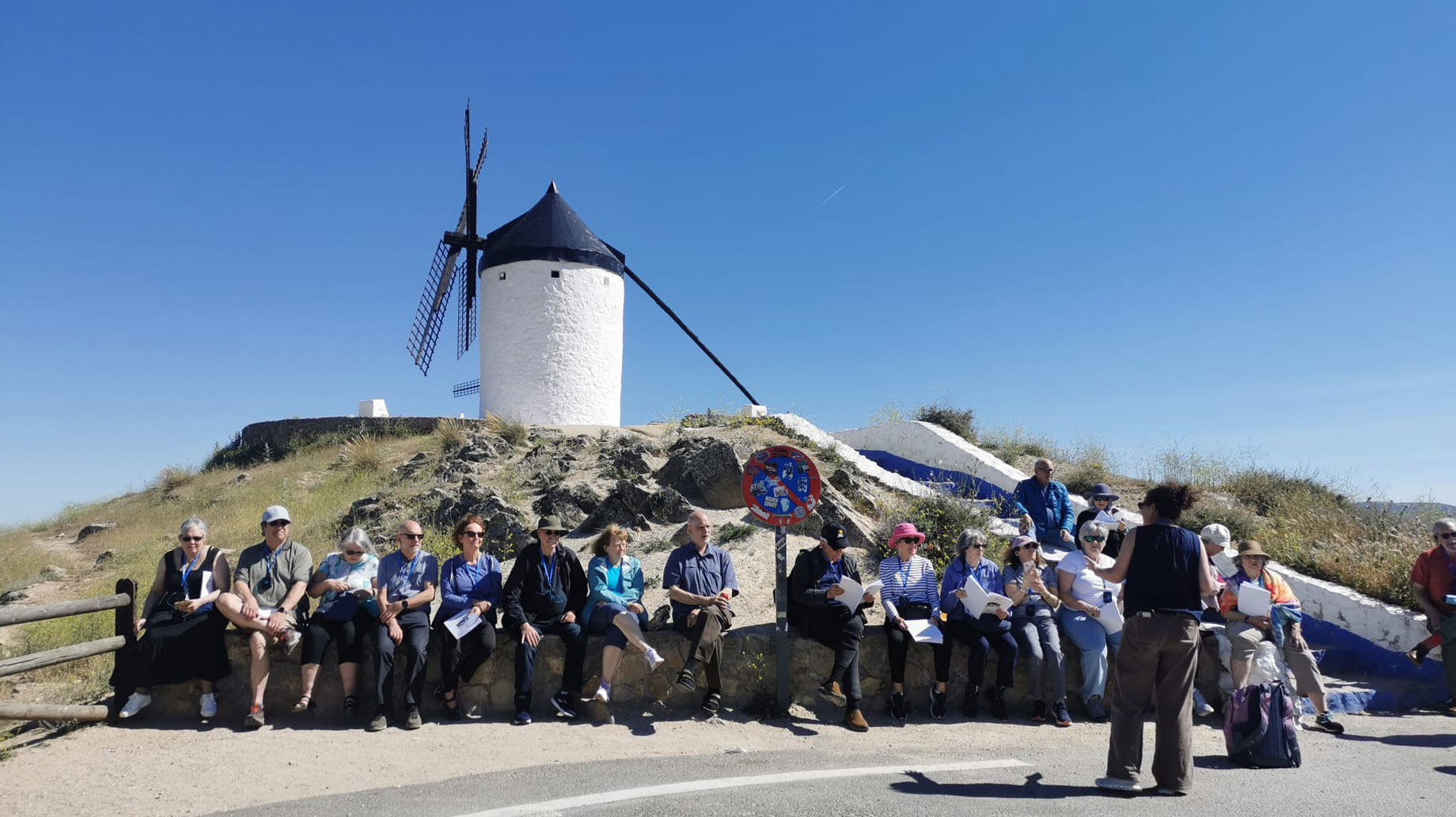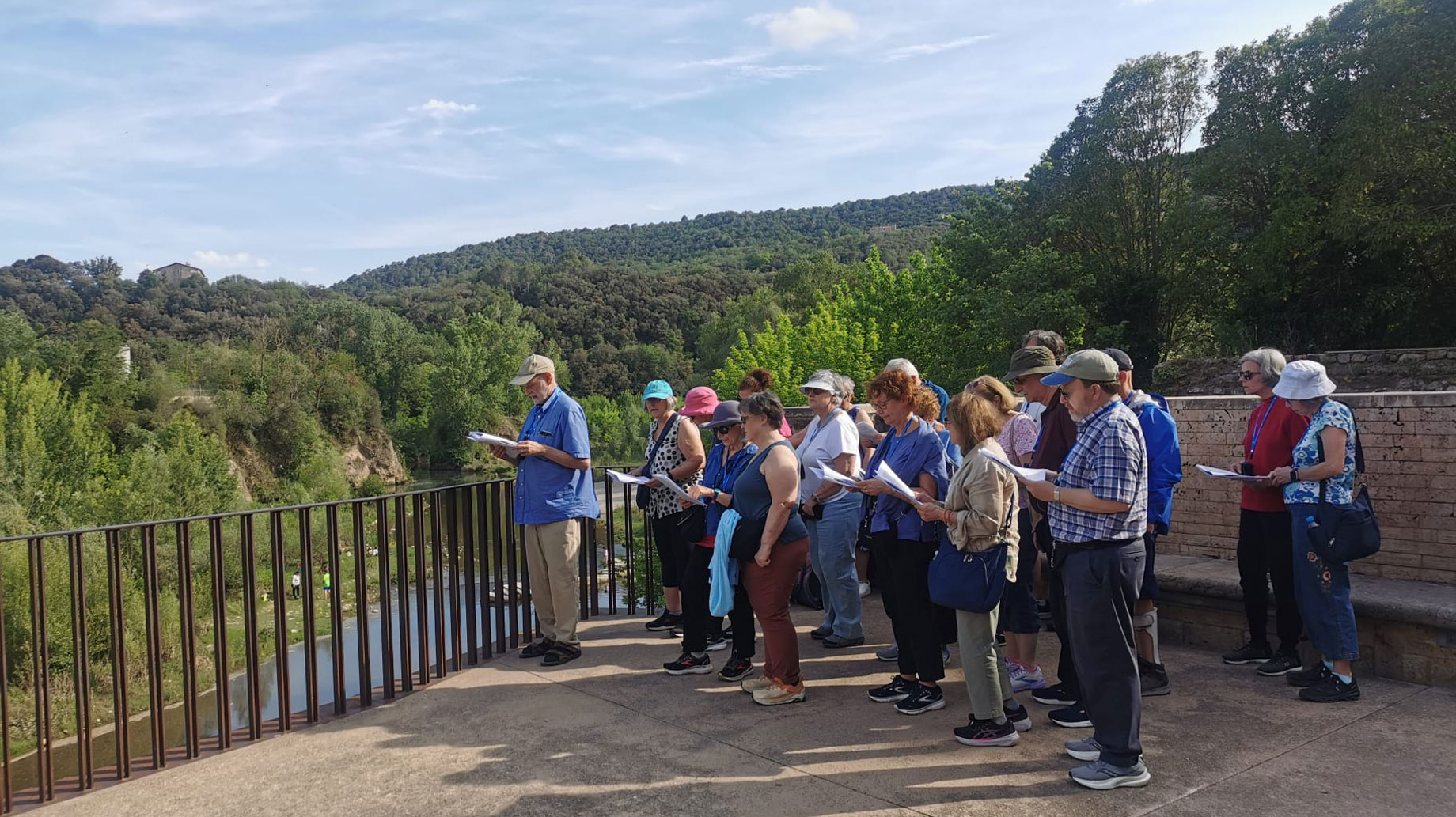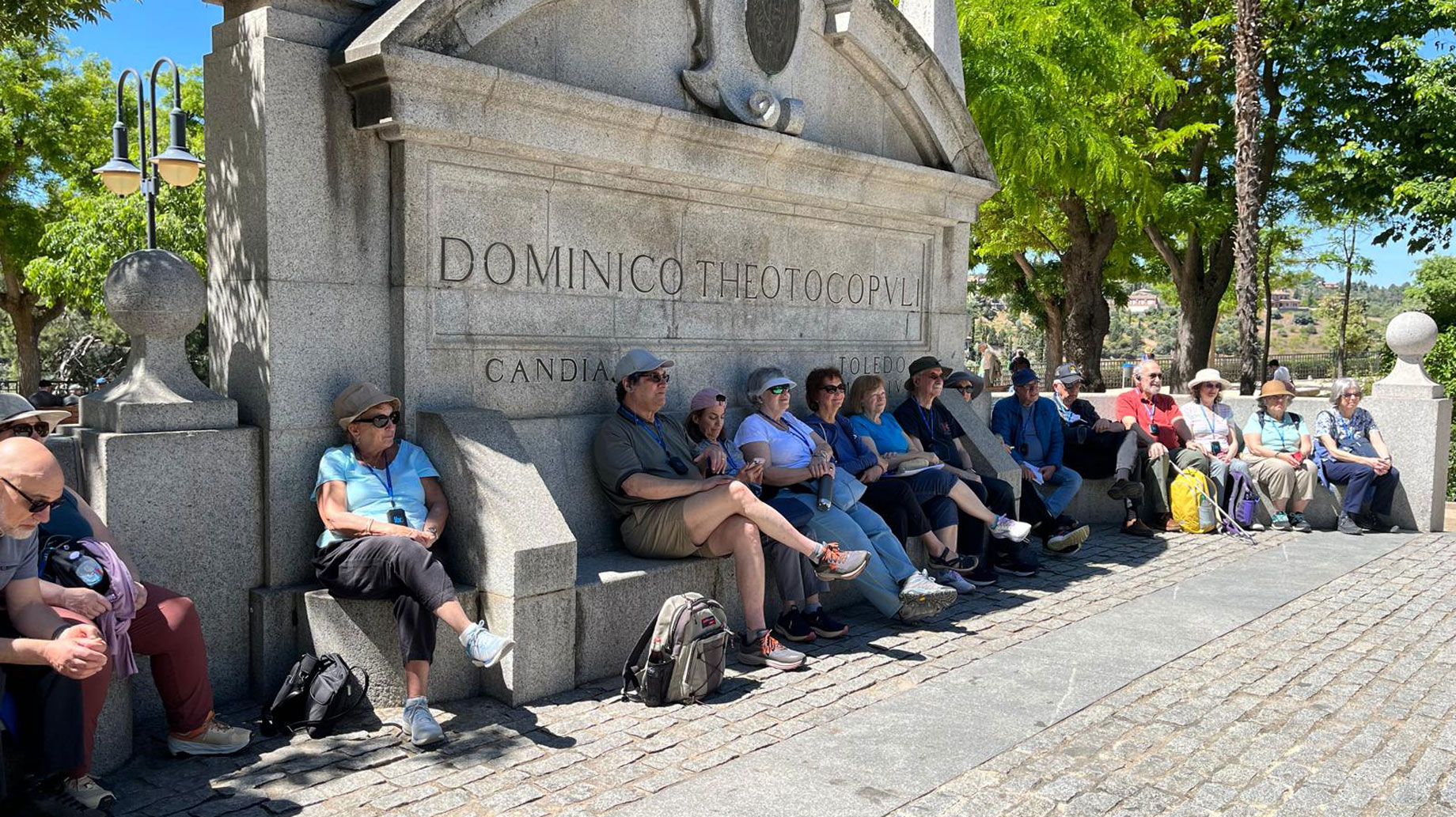News Highlights Educational Travel: Hebrew College Me’ah in Spain

Last month, a group of Me’ah learners from Hebrew College’s adult learning community traveled to Spain for an educational and cultural tour of the country’s remarkable history as a center of medieval Jewish life. Led by Me’ah instructor Rabbi Leonard Gordon, Me’ah co-director Terri Schwartz Russell, and guides from Keshet Educational Tours, our traveling learners visited sites in Toledo, Cordoba, Barcelona, Besalú, and Madrid. While the tour emphasized the enduring legacy of Spain’s Medieval Jewish communities, there was also time to visit other highlights in Spain’s rich cultural tapestry.
“Our trip had a dual focus,” says Rabbi Gordon, who offered a course in the spring on Jewish life and thought in Medieval Spain to prepare learners for their travel. “One was the legacy of Sepharad, the culture of Spanish Jewry. The other was exploring Convivencia, the centuries when Jews, Muslims and Christians shared a cultural heritage in philosophy, religious life, architecture and literature. As we traveled, we visited synagogues built by Muslim architects that were later repurposed as Catholic Churches. We read Hebrew poetry that followed Arabic meter and rhyme schemes, and Jewish philosophy written in Arabic, the language of a shared intellectual life.”
On the first full day of the trip, the group traveled to Toledo, visiting Ibn Shushan Synagogue, which was later transformed into a church, and Shmuel HaLevy Synagogue and Sephardic Museum. They learned about Toledo’s Jewish history and role as an intellectual center of Jewish study and travelled to Consuegra to see the windmills of Don Quixote.

Following Toledo, the group traveled to the Cordoba region to learn about the golden age of Spanish Jewry. They toured the old city, exploring Convivencia, the interplay between Muslim, Jewish and Christian cultures, and the impact of this cross fertilization on Jewish scholarship and tradition. The group’s time in Cordoba was defined by the legacy of two rabbis separated by centuries: Rabbi Haim Casas, the first Spanish born rabbi since the Expulsion of 1492, who the group met in person, and Maimonides, the intellectual powerhouse of Sephardic intellectual tradition whose Torah commentaries and legal writings are widely recognized as a cornerstone of Jewish thought.
The group spent Shabbat in Barcelona, including Kabbalat Shabbat with the local Reform congregation and a Saturday of learning and open time. Following Shabbat, time in the Barcelona region encompassed Jewish and non-Jewish cultural experiences–the Salvador Dalí Museum in Figueres, the Sephardic Jewish Library, an architectural tour of La Sagrada Familia, a walking tour of the Jewish Quarter of Barcelona’s Old City and an evening of tapas and Flamenco. The group also traveled to the nearby towns of Girona and Besalú to explore the remnants of Jewish life there.
The historical tension between Spanish Jewry’s vibrant culture and abruptly forceful conclusion was a major theme of the trip, Rabbi Gordon explains: “The expulsion of 1492 scattered Sepharad to the Middle East, Northern Europe and the Americas, reshaping Jewish thought and practice worldwide—a stunning and lasting legacy.”
Hebrew College’s Me’ah learner-travelers were able to grapple meaningfully with this legacy by immersing themselves in these historical and cultural experiences. “Learning while traveling brings history alive in a way that book learning cannot,” say Jill and Michael Goldberg. “The beauty of Hebrew College’s approach is that we had both — high-level courses and preparatory readings followed by amazing sights and experiences.”
Plans are well underway for next spring’s Hebrew College Me’ah educational travel tour of Central Europe to Vienna, Prague and Budapest. Watch for details coming soon!
This fall, explore more Sephardic tradition, culture, and history with us. Hebrew College Adult Learning will be offering several courses and experiences in conjunction with our fall art exhibit, “Silvina Mizrahi: A Sephardic Spirit,” which opens on September 15 (with an event featuring a talk by the artist, Sephardic food, and a flamenco performance) and runs through December 15, 2024.





